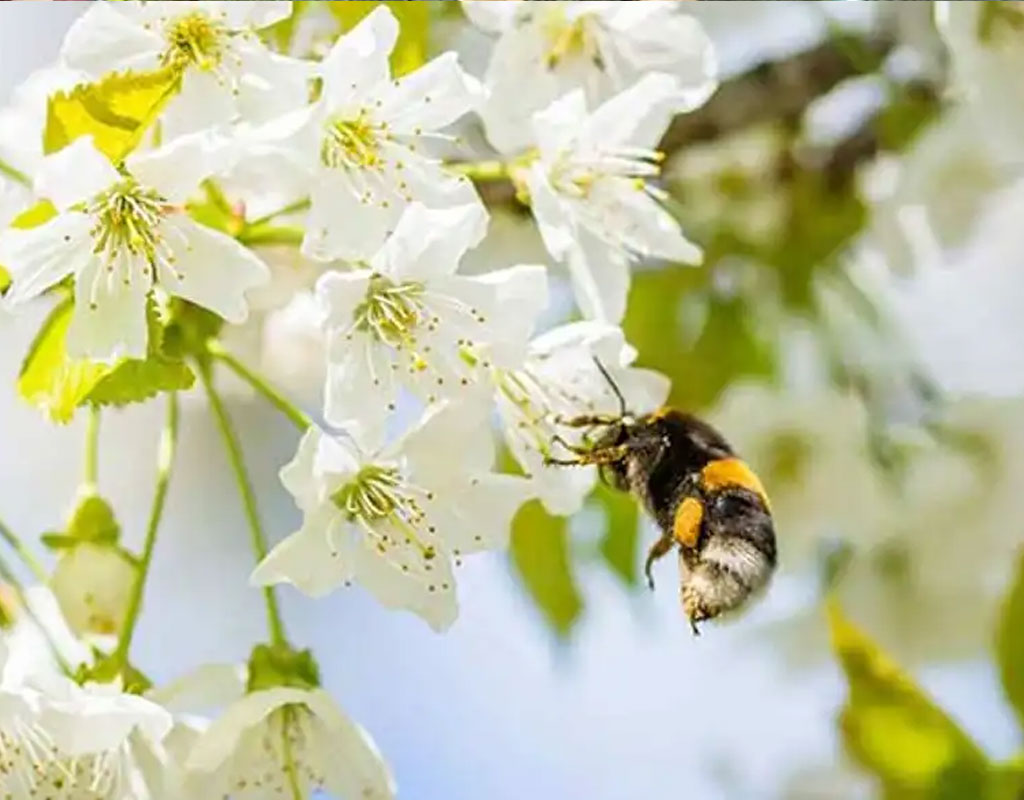Save the Bees in your Garden
Published: 13th Sep 2023

Did you know? A third of the UK’s bee population has disappeared in the last decade! Over 35 British bee species are under threat and 13 species are already extinct. Now is a crucial time to help protect and save the bees in your garden.
ow is a crucial time to help protect and save the bees in your garden. Did you know? A third of the UK’s bee population has disappeared in the last decade! Over 35 British bee species are under threat and 13 species are already extinct.
But why are bees so important?
Pollinating insects like bees have an essential role to play in our ecosystems. A third of all our food depends on their pollination and a world without them would be devastating to our food production and supply. Yes, methods such as hand pollination do exist, but these methods are labour intensive, very slow and extremely costly to the economy.
How can you protect and save the bees in your garden?
British gardens cover around 667,000 acres, providing food, shelter and breeding sites for a range of garden wildlife. Do your bit for nature – check out our top tips below and find out how to help save the bees in your garden.
Grow the plants that bees love!
You don’t need to go all out to make your garden a haven for those buzzy bees. Simple pot planters, herb planters and even hanging baskets filled with the plants that bees love can really help. However, if you’re feeling more adventurous, why not try a veg bed or potato planter.
Bees love;
- Trees and shrubs such as pussy willows, lavender and crab apples
- Flowers such as snowdrops, crocus’ and winter aconite
- Herbs such as sage, rosemary and chives
- Fruit and vegetables such as strawberries, raspberries and kale
- Wildflowers such as cowslips, comfrey and yarrow
Don’t forget to make a year round ha-bee-tat to help save the bees in your garden throughout the year.
Bees need food and shelter in the colder months as well, so be sure to include plants that will help bees through winter into spring. Primrose, winter flowering clematis and lungwort are great for providing nectar and pollen during the colder months.
Give them some privacy, put down the pesticides and use peat-free compost
- Providing shelter by letting the grass grow can also help save bees in your garden. Leaving some of your lawn grow a little longer will help to give pollinators a place to feed and shelter. Even cutting the grass a few centimetres higher can help!
- Pesticides and herbicides are partly to blame for the bee decline too. Not applying pesticides to plants that attract bees can really help to protect them.
- Using peat-free compost can help preserve our peat bogs which also provide a natural habitat for our bees.
Provide water to help save the bees in your garden
- Bees need water to make food for their young and to keep their hive humid and cool. They collect water during the summer months so why not add an aquatic planter or pond to your garden?
- Bee sure to put some stones, floating leaved plants or even corks on the surface for them to land on safely.